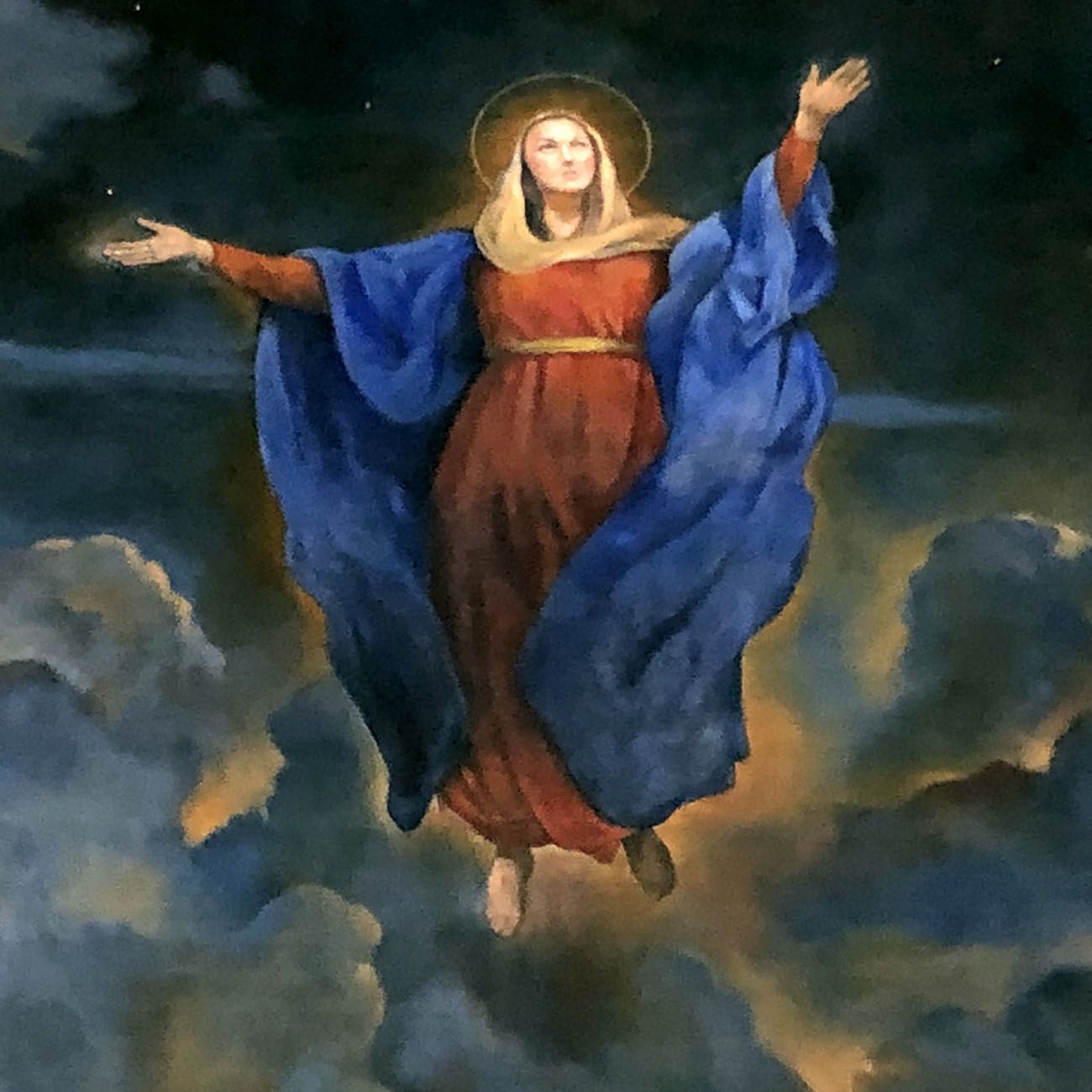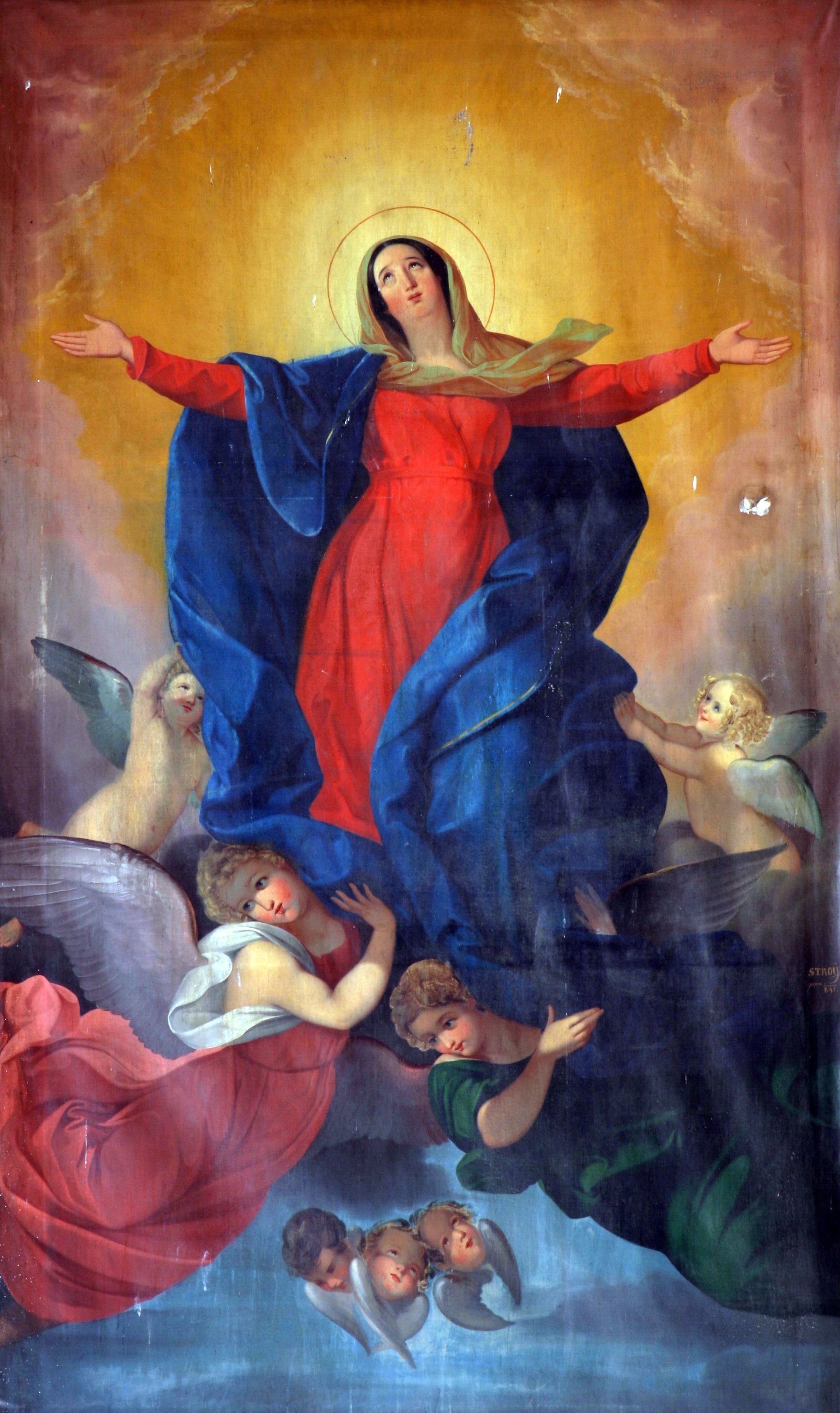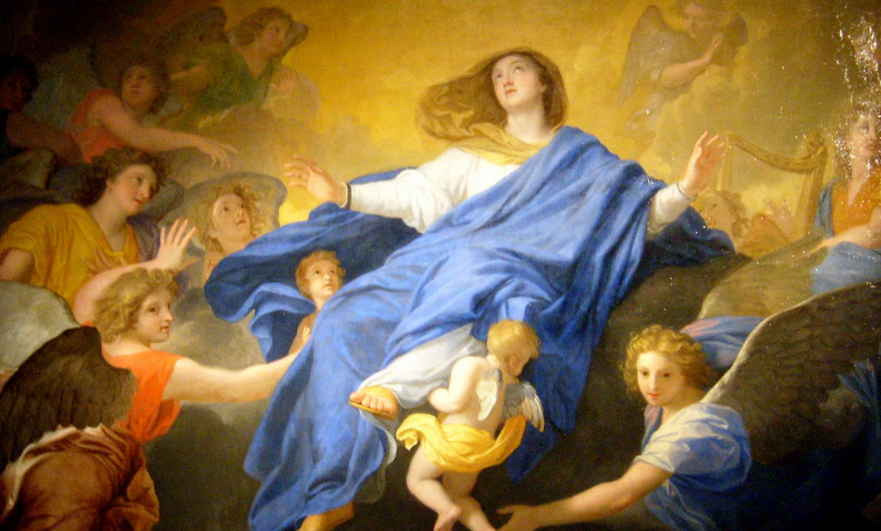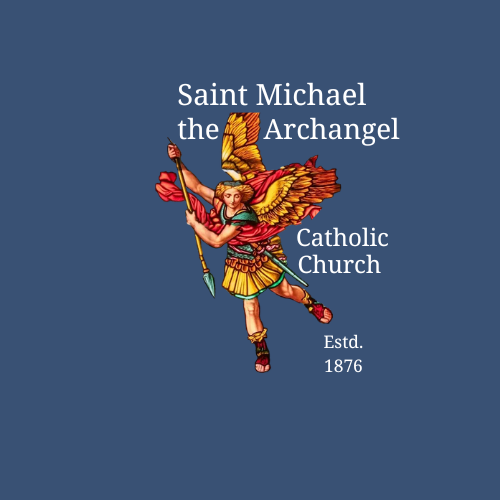The Solemnity of the Assumption of the Blessed Virgin Mary is August 15th.
What does the Solemnity of the Assumption of the Blessed Virgin Mary celebrate?
On August 15th, the Church celebrates the fact that Mary, the Mother of God, was assumed into Heaven at the end of her earthly life.
The Catechism of the Catholic Church (CCC 974) teaches, “The Most Blessed Virgin Mary, when the course of her earthly life was completed, was taken up body and soul into the glory of heaven, where she already shares in the glory of her Son's Resurrection, anticipating the resurrection of all members of his Body.”

Holy Day of Obligation
To see if the Assumption of the Blessed Virgin Mary is a Holy Day of Obligation to attend Mass for this year, SELECT HERE
The Solemnity of the Assumption of the Blessed Virgin Mary was already being celebrated on August 15th in the 5th century. It bore the sense of Our Lady’s “Birth into heaven”, or in the Byzantine tradition, her “Dormition” (“Dormition” in the Orthodox Church is the passing of the Virgin Mary from earthly life..) The feast began to celebrated in Rome in the middle of the 7th century. It was not until November 1st 1950, that Pope Pius XII proclaimed the Dogma of Mary’s assumption body and soul into heaven. In the Apostles’ Creed, we profess our faith in the “Resurrection of the body” and in “life everlasting”. This is the ultimate goal and meaning of our life’s journey. This promise of faith is already accomplished in Mary, who is the “sign of sure hope and comfort” (Preface). It is a privilege granted to Mary, and closely connected to her being the Mother of Jesus. Since death and the corruption of the human body are consequences of sin, it was not right that the Virgin Mary – who is free from sin – should be affected by this natural law. Hence the mystery of her “Dormition” or “Assumption into heaven”. The fact that Mary has already been assumed into heaven is a reason to celebrate, to rejoice, to hope in the “already and the not yet”. One of God’s creatures – Mary – is already in heaven. With her, and like her, we too, who are God’s creatures, will one day be there too. Mary’s destiny, united to the transfigured and glorious body of Jesus, is, therefore, the destiny of all those who are united to the Lord Jesus in faith and love. It is interesting to note that the liturgy – through the biblical texts taken from the Book of Revelation and the Gospel according to Luke (the Canticle of the Magnificat) – helps us, not so much to reflect, as to pray. In fact, the Gospel suggests that Mary’s mystery be read in the light of her prayer, the Magnificat, that is, through the lens of gratuitous love that extends from generation to generation, and the predilection of the least and the poor. Its choicest fruit, you could say its masterpiece, is Mary, a mirror in which the entire people of God can see its own features reflected.
The Solemnity of the Assumption of the Blessed Virgin Mary, body and soul, is an eloquent sign of how not only the “soul” but also the “body” is included in the biblical observation that “God found it very good” (Genesis 1:31), so much so that in the Virgin Mary, “our flesh” would be assumed into heaven. This does not exempt us from committing ourselves to life here on earth, but rather that with our gaze fixed on the goal, on Heaven, our Homeland, we are driven to commit ourselves during our present life to reflect the Magnificat: to rejoice in God’s mercy, to be attentive to all our brothers and sisters we meet along the way, beginning with the weakest and most vulnerable.
-from Vatican News
"In her, assumed into Heaven, we are shown the eternal destiny that awaits us beyond the mystery of death: a destiny of total happiness in divine glory. This supernatural vision sustains our daily pilgrimage. Mary teaches about life. By looking at her, we understand better the relative value of earthly greatness and the full sense of our Christian vocation.”
– Saint Pope John Paul II
What happened in the Assumption of Mary?
“Finally the Immaculate Virgin, preserved free from all stain of original sin, when the course of her earthly life was finished, was taken up body and soul into heavenly glory, and exalted by the Lord as Queen over all things, so that she might be the more fully conformed to her Son, the Lord of lords and conqueror of sin and death.” (Pope Pius XII, Munificentissimus Deus)
The Assumption of the Blessed Virgin is a singular participation in her Son’s Resurrection and an anticipation of the resurrection of other Christians:
"In giving birth you kept your virginity; in your Dormition
you did not leave the world, O Mother of God, but were
joined to the source of Life. You conceived the living God
and, by your prayers, will deliver our souls from death.509
she is our Mother in the order of grace." (Byzantine Liturgy, Troparion, Feast of the Dormition, August 15th)
-from the Catechism of the Catholic Church (CCC 966)
Is the Assumption of Mary in the Bible?
As with the dogma of her Immaculate Conception, the dogma of the Assumption isn’t explicitly stated in Scripture. This was dogmatically defined by Pope Pius XII in 1950 in his encyclical, Munificentissimus Deus, when he referred to many “holy writers who ... employed statements and various images and analogies of Sacred Scripture to illustrate and to confirm the doctrine of the Assumption....” He explained that he wasn’t manifesting a new doctrine but rather fulfilling his divine commission to “faithfully propose the revelation delivered through the Apostles.” The Church teaches that the dogma of the Assumption was at least implicitly present in Scripture and Apostolic Tradition and therefore is a legitimate sign of the “protection of the Spirit of Truth.”
In the encyclical, Pope Pius XII pointed to several Scripture passages that he believed illustrated the doctrine of the Assumption of Mary. Some of them include:
- “Arise, O Lord, and go to thy resting place, thou and the ark of thy might.” Psalm 132 (131):8
- [The Spouse of Canticles] that “coming up from the wilderness, like a column of smoke, perfumed with myrrh and frankincense” (Canticles 3:6)
- The Woman clothed with the Sun (Revelation 12)
- I will make the place of my feet glorious. (Isaiah 60:13)
- Who is that coming up from the wilderness, leaning upon her beloved? (Canticles 8:5)

When was the Assumption of Mary declared?
The Assumption of Mary was taught from the early days of the Church and finally defined as a dogma by Pope Pius XII in 1950. In his Apostolic Constitution Munificentissimus Deus, he wrote, “We proclaim and define it to be a dogma revealed by God that the immaculate Mother of God, Mary ever virgin, when the course of her earthly life was finished, was taken up body and soul into the glory of heaven.”
Proclamation of the Dogma
“For which reason, after we have poured forth prayers of supplication again and again to God, and have invoked the light of the Spirit of Truth, for the glory of Almighty God who has lavished his special affection upon the Virgin Mary, for the honor of her Son, the immortal King of the Ages and the Victor over sin and death, for the increase of the glory of that same august Mother, and for the joy and exultation of the entire Church; by the authority of our Lord Jesus Christ, of the Blessed Apostles Peter and Paul, and by our own authority, we pronounce, declare, and define it to be a divinely revealed dogma: that the Immaculate Mother of God, the ever Virgin Mary, having completed the course of her earthly life, was assumed body and soul into heavenly glory”
-from Pius XII; Munificentissimus Deus, 1 November 1950
Mary set out and traveled to the hill country in haste to a town of Judah, where she entered the house of Zechariah and greeted Elizabeth. When Elizabeth heard Mary’s greeting, the infant leaped in her womb, and Elizabeth, filled with the Holy Spirit, cried out in a loud voice and said, “Blessed are you among women, and blessed is the fruit of your womb. And how does this happen to me, that the mother of my Lord should come to me? For at the moment the sound of your greeting reached my ears, the infant in my womb leaped for joy. Blessed are you who believed that what was spoken to you by the Lord would be fulfilled.”
And Mary said:
“My soul proclaims the greatness of the Lord,
my spirit rejoices in God my Savior
for he has looked with favor on his lowly servant.
From this day all generations will call me blessed:
the Almighty has done great things for me,
and holy is his Name.
He has mercy on those who fear him
in every generation.
He has shown the strength of his arm,
he has scattered the proud in their conceit.
He has cast down the mighty from their thrones,
and has lifted up the lowly.
He has filled the hungry with good things,
and the rich he has sent away empty.
He has come to the help of his servant Israel
for he has remembered his promise of mercy,
the promise he made to our fathers,
to Abraham and his children for ever.”
Mary remained with her about three months and then returned to her home.
Luke 1:39-56
Praising God
Today, the Virgin Mary, with her Magnificat, teaches us how to praise and glorify God. It is an invitation through which the Virgin Mary, today contemplated in glory, invites us to go beyond our usual mode of magnifying problems and difficulties. Mary is able, and today she teaches this to us, to look on life through another lens: our hearts are greater than our sins. And even if our hearts condemn us, God is greater than our hearts! (cf. 1 Jn 3:20) This is not, therefore, illusory, as if to say there are no problems in life. It is about appreciating what is beautiful and good in life and knowing how to thank God for it! This way, even problems are seen in their proper light.
God Surprises
A second aspect that deserves to be highlighted today is the fact that Mary was a virgin, and Elizabeth was sterile. God is the One who goes “beyond”, who surprises you through His provident, salvific action.
The Goal
Mary already experiences God’s glory. She has reached the goal where we will one day all find ourselves. This is why Mary is today a sign of consolation and hope because if she, a creature like ourselves, is already there, we can also join her there. Let us fix our gaze and our hearts on her who never abandoned her Son Jesus and who today enjoys the joy and glory of Heaven. And let us entrust ourselves to her so that she might help us journey the paths of life knowing how to recognize the great things that God accomplishes in us and around us, to know how to magnify Him with the hymn of our existence.
Prayer to Mary, Assumed into Heaven
O Immaculate Mary, Assumed into heaven,
you who are most blessed in the vision of God:
of God the Father who exalted you among all creatures,
of God the Son who willed that you bear Him as your Son and that you should be His Mother,
of God the Holy Spirit who accomplished the human conception of the Savior in you.
O Mary, most pure
O Mary, most sweet and beautiful
O Mary, strong and thoughtful woman
O Mary, poor and sorrowful
O Mary, virgin and mother
woman very human like Eve, more than Eve.
You are near to God by your grace and by your privileges
in your mysteries
in your mission, in your glory.
O Mary, assumed into the glory of Christ
in the complete and transfigured perfection of our human nature.
O Mary, gate of heaven
mirror of divine light
ark of the Covenant between God and mankind,
let our souls fly after you
let them fly long your radiant path,
transported by a hope that the world does not contain eternal beatitude.
Comfort us from heaven, O merciful Mother,
and guide us along your ways of purity and hope
till the day of that blessed meeting with you
and with your divine Son
our Savior, Jesus. Amen!
-from Saint Paul VI
What does the Assumption of Mary teach us?
In a homily for the Assumption, Pope Saint John Paul II said, “Taken up into Heaven, Mary shows us the way to God, the way to Heaven, the way to life. She shows it to her children baptized in Christ and to all people of good will. She opens this way especially to the little ones and to the poor, those who are dear to divine mercy. The Queen of the world reveals to individuals and to nations the power of the love of God….”





